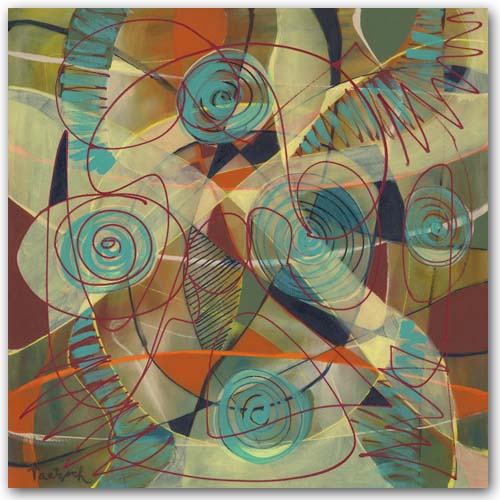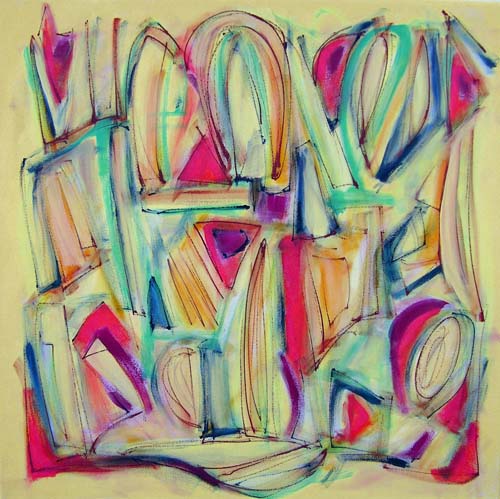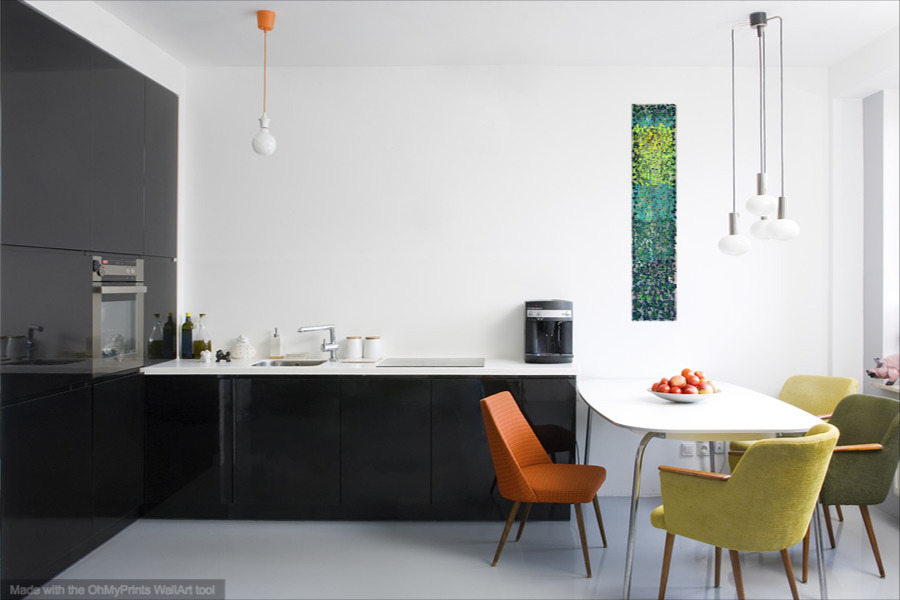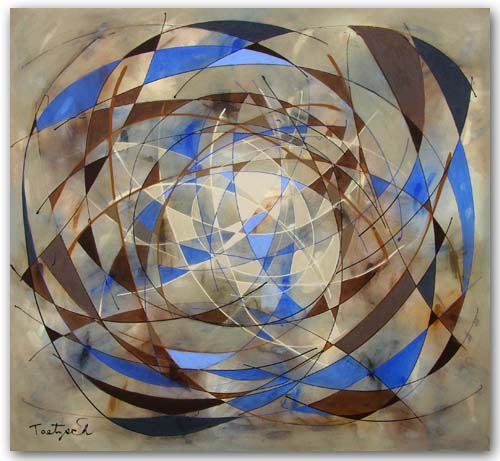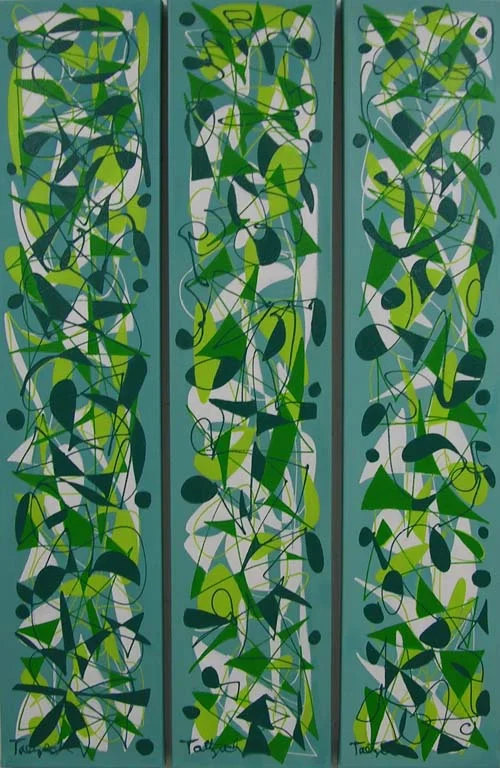My first step in this new painting was to give the 40" x 36" stretched canvas two coats of Titanium white acrylic mixed with a gloss medium. After it dried thoroughly, I painted sections of it with Mars black:
Step 1
In my next painting session, I mixed some shades of pale orange, yellow, light green and aqua. With a brush, I painted over sections, applying the paint in a very loose, expressionist manner. I also added some cadmium red light, diluted with water and gloss medium. Then I used a palette knife to make two slashes of Titanium white.
Step 2
When I worked on this canvas again, I realized I had lost a lot of the openness I'd created initially by filling in too much of the painting with color. So I dipped my brush in the white paint mixture and began to selectively paint over sections in order to restore that sense of spaciousness:
Step 3
In this final stage of the painting, I first felt it needed more yellow, and added it selectively. Then I gave myself license to add whimsical lines in white and black, which had a graffiti-like effect. When I stepped back, I was satisfied:
Carnival, 40" x 30" x 1.5"









